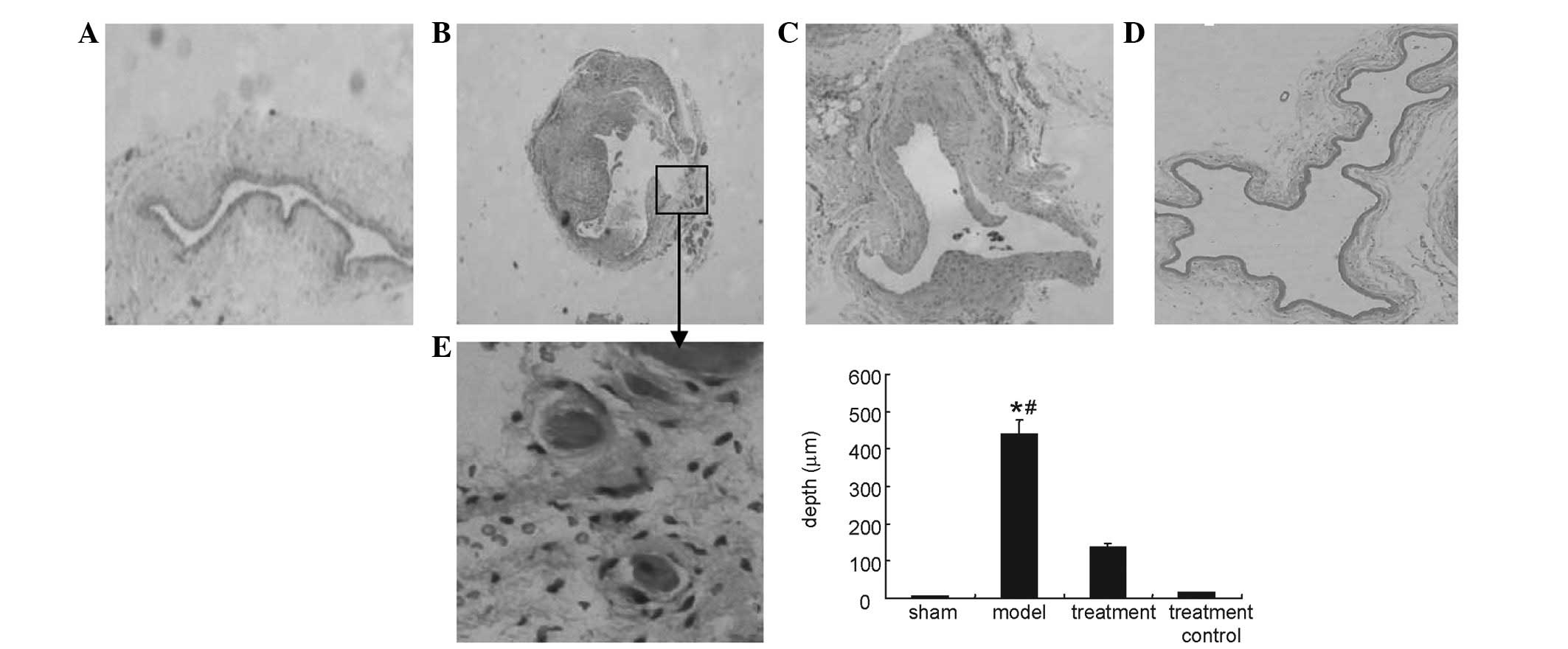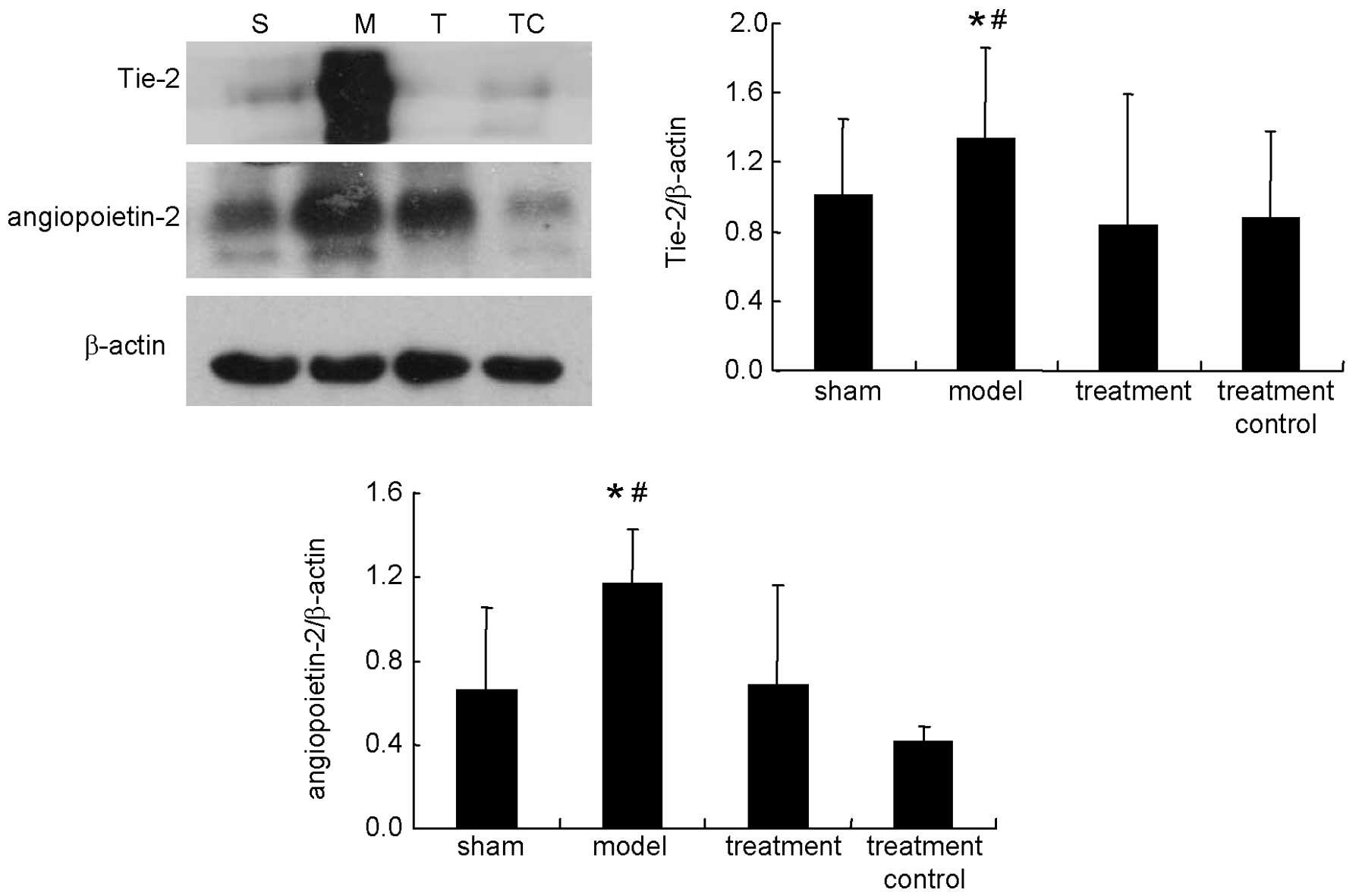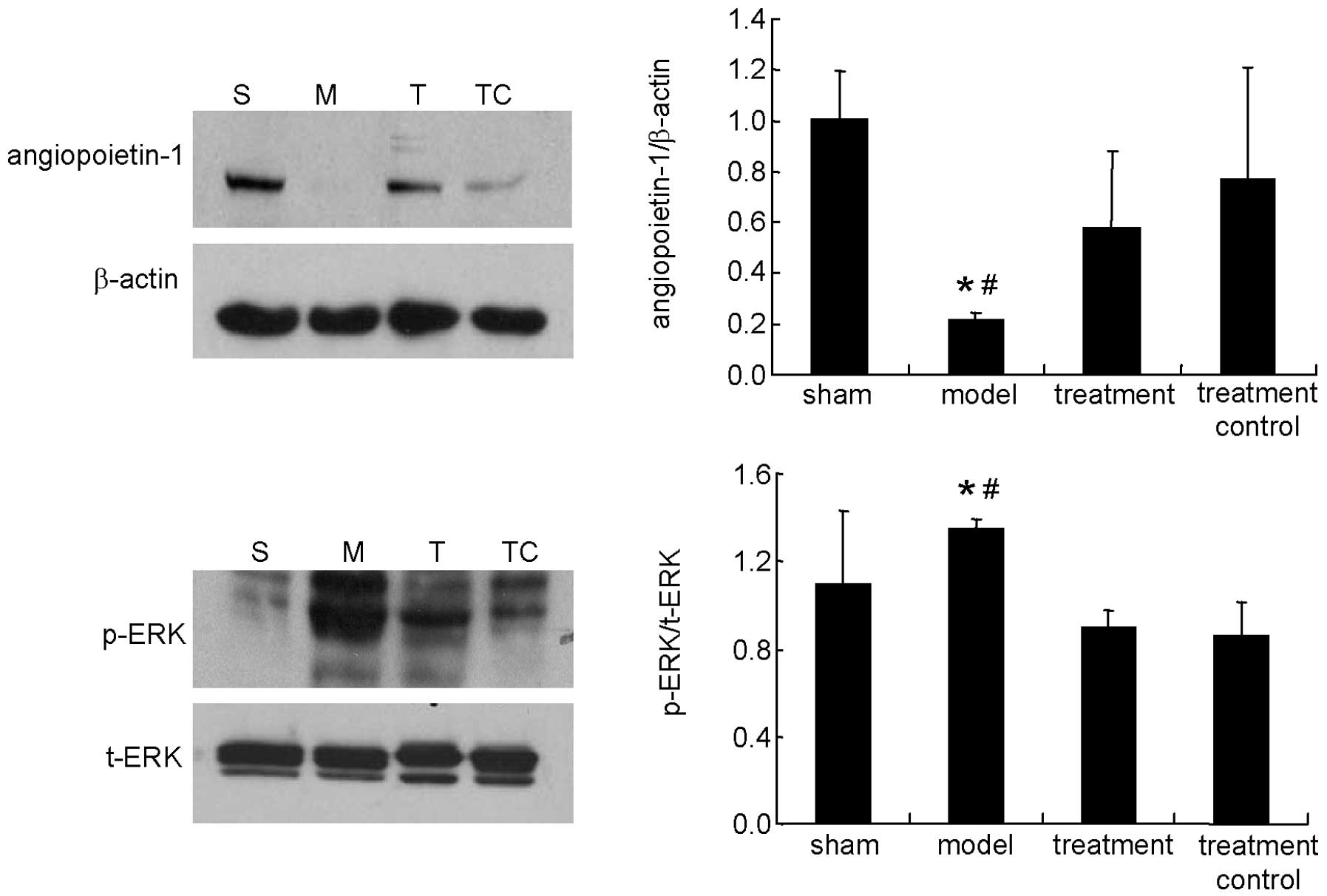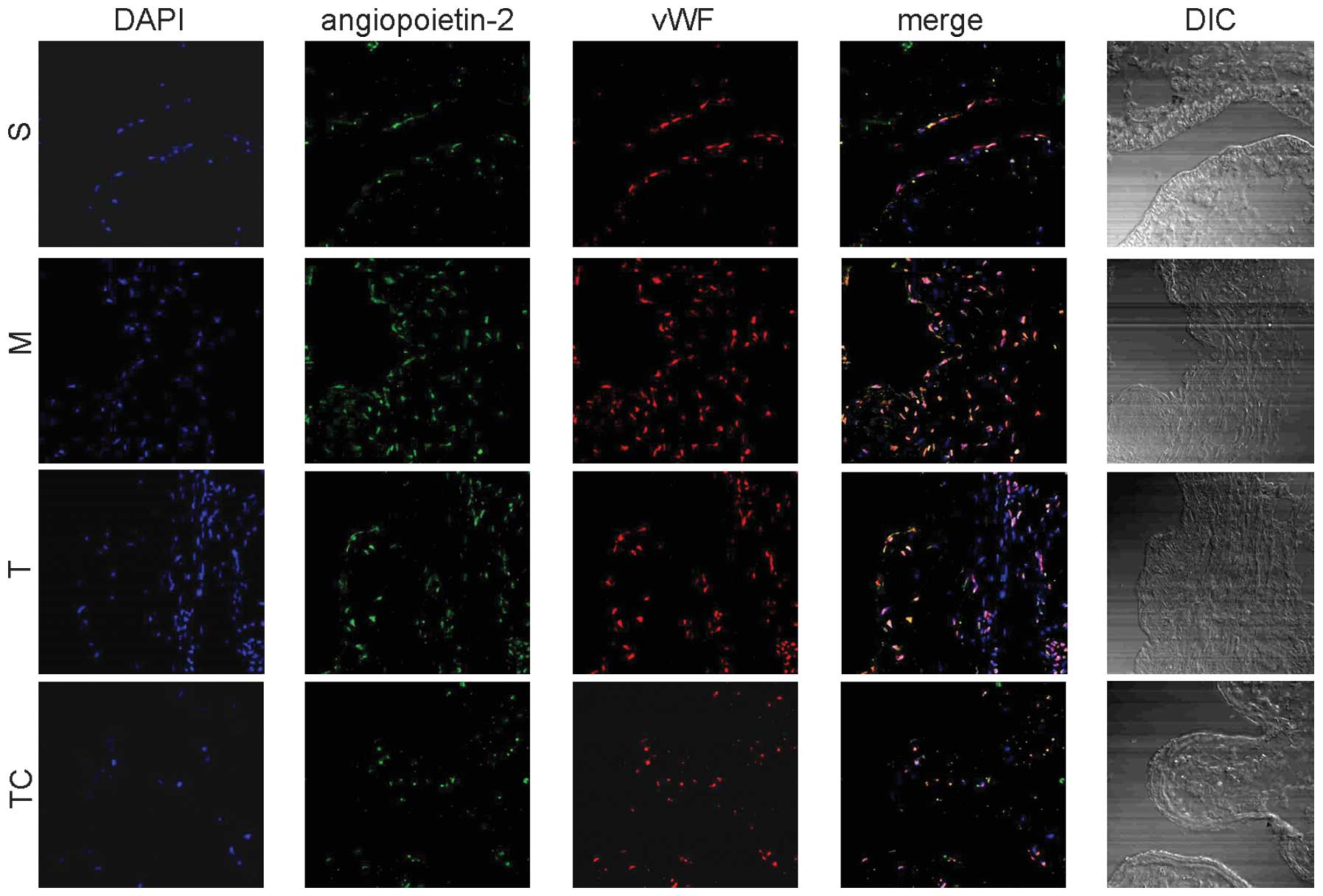|
1
|
Manca O, Pisano GL, Carta P, et al: The
management of hemodialysis arteriovenous fistulas in well
functioning renal transplanted patients: many doubts, few
certainties. J Vasc Access. 6:182–186. 2005.PubMed/NCBI
|
|
2
|
Lee T and Roy-Chaudhury P: Advances and
new frontiers in the pathophysiology of venous neointimal
hyperplasia and dialysis access stenosis. Adv Chronic Kidney Dis.
16:329–338. 2009. View Article : Google Scholar : PubMed/NCBI
|
|
3
|
Langer S, Heiss C, Paulus N, et al:
Functional and structural response of arterialized femoral veins in
a rodent AV fistula model. Nephrol Dial Transplant. 24:2201–2206.
2009. View Article : Google Scholar : PubMed/NCBI
|
|
4
|
Kokubo T, Ishikawa N, Uchida H, et al: CKD
accelerates development of neointimal hyperplasia in arteriovenous
fistulas. J Am Soc Nephrol. 20:1236–1245. 2009. View Article : Google Scholar : PubMed/NCBI
|
|
5
|
Langer S, Kokozidou M, Heiss C, et al:
Chronic kidney disease aggravates arteriovenous fistula damage in
rats. Kidney Int. 78:1312–1321. 2010. View Article : Google Scholar : PubMed/NCBI
|
|
6
|
Rodríguez-Pla A, Bosch-Gil JA,
Rosselló-Urgell J, Huguet-Redecilla P, Stone JH and
Vilardell-Tarres M: Metalloproteinase-2 and -9 in giant cell
arteritis: involvement in vascular remodeling. Circulation.
112:264–269. 2005.PubMed/NCBI
|
|
7
|
Caplice NM, Wang S, Tracz M, et al:
Neoangiogenesis and the presence of progenitor cells in the venous
limb of an arteriovenous fistula in the rat. Am J Physiol Renal
Physiol. 293:F470–F475. 2007. View Article : Google Scholar : PubMed/NCBI
|
|
8
|
Kanwar YS: Functional duality of
progenitor cells influxing into arteriovenous fistula during its
neoangiogenesis. Am J Physiol Renal Physiol. 293:F468–F469. 2007.
View Article : Google Scholar : PubMed/NCBI
|
|
9
|
Maisonpierre PC, Suri C, Jones PF, et al:
Angiopoietin-2, a natural antagonist for Tie2 that disrupts in vivo
angiogenesis. Science. 277:55–60. 1997. View Article : Google Scholar : PubMed/NCBI
|
|
10
|
David S, Kümpers P, Hellpap J, et al:
Angiopoietin 2 and cardiovascular disease in dialysis and kidney
transplantation. Am J Kidney Dis. 53:770–778. 2009. View Article : Google Scholar : PubMed/NCBI
|
|
11
|
Vandenbunder B: Angiopoietin-2, a new
molecular actor involved in vascular tree morphogenesis. Bull
Cancer. 84:1079–1080. 1997.(In French).
|
|
12
|
Augustin HG, Koh GY, Thurston G and
Alitalo K: Control of vascular morphogenesis and homeostasis
through the angiopoietin-Tie system. Nat Rev Mol Cell Biol.
10:165–177. 2009. View
Article : Google Scholar : PubMed/NCBI
|
|
13
|
Chong AY, Caine GJ, Freestone B, Blann AD
and Lip GY: Plasma angiopoietin-1, angiopoietin-2, and angiopoietin
receptor tie-2 levels in congestive heart failure. J Am Coll
Cardiol. 43:423–428. 2004. View Article : Google Scholar : PubMed/NCBI
|
|
14
|
Patel JV, Lim HS, Varughese GI, Hughes EA
and Lip GY: Angiopoietin-2 levels as a biomarker of cardiovascular
risk in patients with hypertension. Ann Med. 40:215–222. 2008.
View Article : Google Scholar : PubMed/NCBI
|
|
15
|
Westra J, de Groot L, Plaxton SL, et al:
Angiopoietin-2 is highly correlated with inflammation and disease
activity in recent-onset rheumatoid arthritis and could be
predictive for cardiovascular disease. Rheumatology (Oxford).
50:665–673. 2011. View Article : Google Scholar
|
|
16
|
Lauver DA, Booth EA, White AJ, Poradosu E
and Lucchesi BR: Sulodexide attenuates myocardial
ischemia/reperfusion injury and the deposition of C-reactive
protein in areas of infarction without affecting hemostasis. J
Pharmacol Exp Ther. 312:794–800. 2005. View Article : Google Scholar
|
|
17
|
Kim SB, Kim SH, Lee MS, Chang JW, Lee SK
and Park JS: Effects of sulodexide on hemostatic factors, lipid
profile, and inflammation in chronic peritoneal dialysis patients.
Perit Dial Int. 27:456–460. 2007.PubMed/NCBI
|
|
18
|
Shustov SB: Controlled clinical trial on
the efficacy and safety of oral sulodexide in patients with
peripheral occlusive arterial disease. Curr Med Res Opin.
13:573–582. 1997. View Article : Google Scholar : PubMed/NCBI
|
|
19
|
Lunetta M and Salanitri T: Lowering of
plasma viscosity by the oral administration of the
glycosaminoglycan sulodexide in patients with peripheral vascular
disease. J Int Med Res. 20:45–53. 1992.PubMed/NCBI
|
|
20
|
Rossini M, Naito T, Yang H, et al:
Sulodexide ameliorates early but not late kidney disease in models
of radiation nephropathy and diabetic nephropathy. Nephrol Dial
Transplant. 25:1803–1810. 2010. View Article : Google Scholar : PubMed/NCBI
|
|
21
|
Lin T, Horsfield C and Robson MG:
Arteriovenous fistula in the rat tail: a new model of hemodialysis
access dysfunction. Kidney Int. 74:528–531. 2008. View Article : Google Scholar : PubMed/NCBI
|
|
22
|
Bongrazio M, Baumann C, Zakrzewicz A,
Pries AR and Gaehtgens P: Evidence for modulation of genes involved
in vascular adaptation by prolonged exposure of endothelial cells
to shear stress. Cardiovasc Res. 47:384–393. 2000. View Article : Google Scholar : PubMed/NCBI
|
|
23
|
Dixit M, Bess E, Fisslthaler B, et al:
Shear stress-induced activation of the AMP-activated protein kinase
regulates FoxO1a and angiopoietin-2 in endothelial cells.
Cardiovasc Res. 77:160–168. 2008. View Article : Google Scholar : PubMed/NCBI
|
|
24
|
Park HY, Kang S, Kim GY, et al: Inhibition
of neointimal proliferation of rat carotid artery by sulodexide. J
Korean Med Sci. 12:210–214. 1997. View Article : Google Scholar : PubMed/NCBI
|













